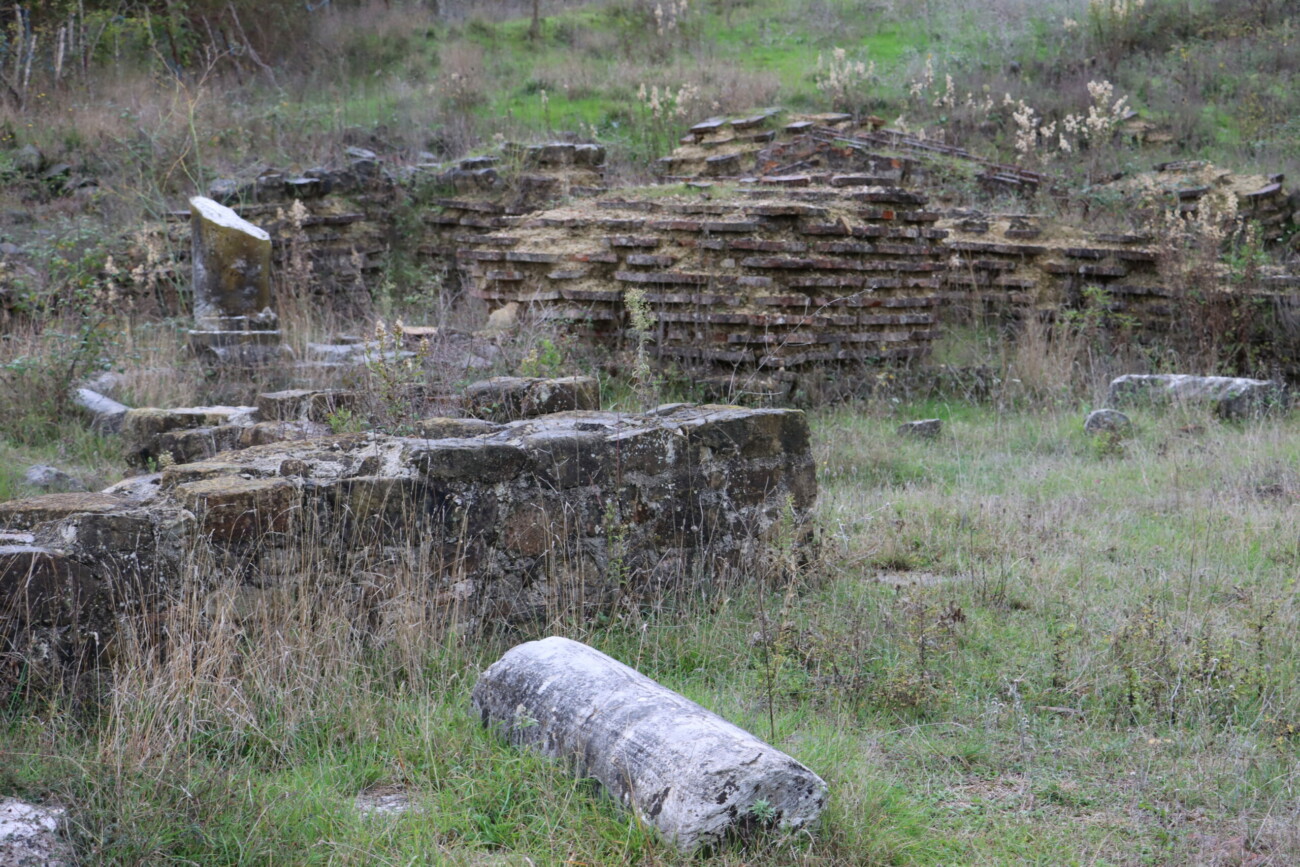The basilica is located on a gentle hill in the village of Gjurica, 300 m to the west of the Ishëm River and 2 km to the southeast of the Ishmi fortress. The 47 m long and 20 m wide basilica had a dome in the center of the vault. Its walls are built with 5 rows of bricks on which crosses and the sixpointed star of David are stamped. Large 6-centimeter joints with
rows of bricks are a feature of the constructions of the V-VI centuries AD. The fresco fragments show that the
walls of the basilica were plastered and painted with frescoes.
Inside it was found a series of marble capitals of two types, “Theodosian” and Corinthian, with acanthus leaves. The columns that supported the capitals are massive, with a diameter of 0.38 m. The basilica was decorated with a stone iconostasis (templon), from which fragments decorated with the monogram of Christ and crosses in relief were found. Inside the basilica were found fragments of ceramic vessels from the V-VI centuries, walls of glass vessels, iron crosses, and two coins from the V-VI centuries AD, one of the emperor Anastas from Durrës and the other of the Illyrian emperor Justinian I, from the year 542 AD.
Fragments of medieval pottery and bronze and silver coins of the XII-XV centuries, show that in these centuries the church was rebuilt and reused, although with much more limited dimensions. The planimetric structure and architectural elements show that the basilica was built at the end of the V century and was burned at the end of the VI century AD, probably as a result of Slavic incursions.


